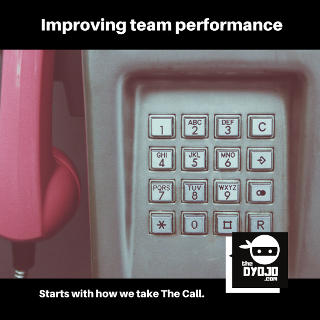Improving your property restoration business through consistent optimization efforts.“When setting expectations, no matter what has been said or written, if substandard performance is accepted and no one is held accountable—if there are no  This article was featured as part of our monthly column The Intentional Restorer (volume 3) with Restoration and Remediation Magazine (R&R). Whether your career path started in property restoration or in some other industry, you know what it is like to work you way up from an entry level position to where you are now. You remember what it is like to have something go wrong and to be blamed for that result. The typical approach in hierarchical management systems is for the blame to “roll downhill”, right? But, as a person in a position of leadership (at whatever level you find yourself), you have committed yourself to reaching for higher purpose for yourself as well as your team. It’s so much easier to maintain the status quo. Yet, with the rate of change and the demands in the market, you know that doing things the way we’ve always done them is a rapid path to obsolescence. Change is painful but death is permanent. Doing the hard things of turning something around or improving your system requires commitment to work through obstacle after obstacle and to consistently progress through opposition. The battle for improvement is never over, you rise and grind only to wake up and do it again. Elevate performance by clarifying expectationsDedicated leaders, like yourself, understand that assigning blame is not a strategy for success when working to improve your internal processes. You understand that as a leader, “The buck stops here,” with regards to accountability for making progress in the process. Developing your team to embrace a growth mindset, that will lead to sustained competitive production, requires intentional leadership. Long term success follows a sequence of clarity, consistency and accountability.
As an example for how this process plays out, let’s take a look into a typical day for a property restoration team. We will identify some of those core issues that hold teams back from reaching their goals, discuss potential solutions and then apply those concepts to your business. Quiet on set, begin scene: Team Leader, we will call him Charles, asks his business mentor, “How do we get our technicians to fill out their paperwork consistently, thoroughly and on time?” “How often do you provide your technicians with clear and consistent paperwork before they arrive on a job site?” Business Mentor, we will call her Shirley, responds to the question with a question. “What are you talking about? These are emergencies we are responding to.” Charles clearly thinks Shirley has lost her marbles. “Whether you are responding to an emergency or facilitating a repair, isn’t your client intake process the same?” Shirley feels the indignation but does not respond to it. “What does that have to do with my technicians not doing their job?” Charles is ready to throw Shirley out of the building. “The best way to build accountability in vision and values is to demonstrate them from top to bottom.” Shirley calmly presses forward. “Oh, so it’s my fault now? I’m the reason my technicians don’t do their paperwork consistently and on time?” Charles stretches his hand towards the shoulder of Shirley. “Before you throw me out of the building, let’s look at a few things...“ Building team accountability starts with leadership executing their responsibilitiesHow consistent and thorough are your project assignments? Does your organization provide clear enough details to your front line employees to set them up for success when responding to a work assignment? Too often we use the excuse that we respond to emergencies to allow us to generate unclear work scopes. Where does the process of clear scope and expectations begin? You know the answer--it begins with whomever is taking the phone call. Resource: We dealt with the 5 layers of consistent customer communication in an article with Restoration & Remediation Magazine How often do you receive unclear details from a client?
Does unclear data cost your business time, resources and profitability? Yes. The process of clear communication through complete, thorough and timely paperwork starts with your investment in the process of receiving project information. You cannot control when a lead comes in but you can control how thoroughly you gather information. This is important so that no one on your team is wasting time duplicating efforts to get the information that should have been received when the call came in. You may not know all the details for an emergency but if you have enough data we can prepare your team to respond with the appropriate people power, equipment and materials. You know that there is a big difference between responding to a sink overflow in a laundry room on the main floor with no crawl space and a busted sewer line in the crawl space of a 5,000 square foot home. The technicians who are trained to respond, the equipment and resources that will be needed as well as the ability to estimate how that team being offline for the project will impact your ability to respond to other losses are all important. Improving profitability starts with clarifying your internal processConsistency in your paperwork starts with details gathered at the time a call for a new project is received (intake).
Consistency in your process will fuel improvements in your productionThe details will make or break a well documented loss that will enable you to get paid for your work on an insurance claim. The details of your process and the workflow consistency will make or break your ability to elevate your teams performance. When you master the most basic functions of your organization it builds momentum for tackling more complex issues within your process. When you detect negative symptoms in your business, such as a lack of thoroughness in the project documentation from your team members in the field, it should cause you to seek the root sources. It sounds simple and yet it when these things are not practiced there are negative ripples throughout the organization. When you commit to taking calls with clarity and consistency you demonstrate to your team that you value this process and that everyone is being held to the same standard. You can begin to eliminate chaos in your organization and build positive momentum by intentionally developing your process. Too often teams under utilize their receptionist and allow their salespeople to get away with maneuvering around the rules. When you build clarity and consistency you establish purpose for each person in your organization. When you stand up for these principles, as change will always be tested, you prove your commitment to the cause. Steps for improving employee performanceIf you want to motivate your property restoration employees to higher quality performance and expect consistency from your technicians:
Check out our video on this topic - Garbage In, Garbage Out (Part 1) - The Call.
0 Comments
Leave a Reply. |
AuthorThoughts on personal and professional development. Jon Isaacson, The Intentional Restorer, is a contractor, author, and host of The DYOJO Podcast. The goal of The DYOJO is to help growth-minded restoration professionals shorten their DANG learning curve for personal and professional development. You can watch The DYOJO Podcast on YouTube on Thursdays or listen on your favorite podcast platform.
Archives
March 2023
Categories
All
<script type="text/javascript" src="//downloads.mailchimp.com/js/signup-forms/popup/unique-methods/embed.js" data-dojo-config="usePlainJson: true, isDebug: false"></script><script type="text/javascript">window.dojoRequire(["mojo/signup-forms/Loader"], function(L) { L.start({"baseUrl":"mc.us5.list-manage.com","uuid":"b9016446bd3c6a9f0bd835d4e","lid":"83282ffb9e","uniqueMethods":true}) })</script>
|
Jon Isaacson |
Connect. Collaborate. Conquer.
© COPYRIGHT 2015. ALL RIGHTS RESERVED.
|




 RSS Feed
RSS Feed